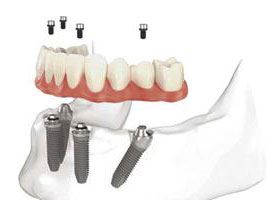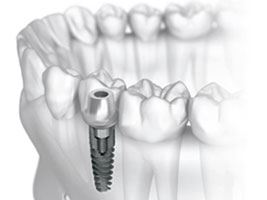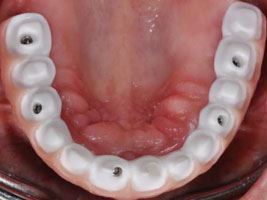No products
To be determined
Shipping
0,00€
Total
Product successfully added to your shopping cart
Quantity
Total
There are 0 items in your cart.
There is 1 item in your cart.
Total products
Total shipping
To be determined
Total
Advantages and disadvantages of prosthesis with screw fixation

Advantages of prosthesis with screw fixation
• The possibility of withdrawing
• Accurate landing of the components
• No risk of cement removal in soft tissues
• Reduction of working time in the clinic and laboratory
Possibility of withdrawing
Obviously, the main advantage of screw fixation of the prosthesis is when the prosthesis is attached directly to the implant screw or abutment is an opportunity for orthopedic prosthesis replaced easily and predictably. This may be necessary if an artificial tooth erased and there is a need to fix the prosthesis and other breakdowns doctor only has to remove the screw.
Factory surface treatment compound
Screw-retained prosthesis will have a component of industrial production and therefore requires accurate landing. For this needs important accurate and coordinated work of the surgeon, orthopedic and dental technician. Although it is considered an ideal landing passive, it is unattainable because of the complexities screw mechanics, limitations of the production process and functional deformation of the jaw.

Cement resorption
Mechanism that protects against breakage. It is difficult to control the amount of cement during fixation; it causes the gradual resorption of gap formation between the components of the prosthesis. If the cement remains in the soft tissues surrounding the implant, it will cause irritation and inflammation of the lining around the implant.
In addition to identifying the fault point in response to the increased load is assumed that if excessive force arises inside the prosthesis, the breaking of the screw will be a warning about overloading. This is particularly applicable to the case with a small gold screw, firming and fixed prosthesis in the abutment. Careful examination will give an idea about the reason for failure of the screw. Cases of screw breakage always need research; general cases are not sufficiently tight screwing, failure in the attempt to achieve a passive landing impact from the console and increase the occlusal load because of an irregular shape.
In largely predictable aspect of prosthetic screws on is the ability to change and shape the contours of the soft tissues, using temporary crowns. Working with cemented construction is extremely difficult to achieve time when the risk of excessive excretion of cement in soft tissues can cause inflammation of subgingival. Changing the soft tissue contours
Disadvantages of prosthesis with screw fixation
• Hole access should coincide with the vertical axis of the implant
• Hole access can be seen on the occlusal surface
• Passive landing requires a high skill
• Extensive amount of material in the neck during the installation structure in the front part of the dental arch.

Access hole
Molding unit or CAD / CAM is a generated frame, wherein the prosthesis is fixed with screws directly to the implant requires the creation of a large access holes for the screws of greater diameter, which are used at the implant body. Using of intermediate abutments helps to reduce the diameter of the screw, since they use more narrow screws. The main drawback with the screw fixation of the prosthesis is the requirements for the access opening, which must coincide with the vertical axis of the implant or abutment. This means that the front parts of the jaws is increased in the neck volume. Selecting a screw or cement fixation may affect the location and orientation of the implants. Undoubtedly, access holes will be visible and at the end of the treatment they need to fill temporary filling material based on plastics. It is believed that the rapid erasure of these materials may lead to unstable occlusion.
More sophisticated equipment
Prosthesis fixation on implant is often mechanically more complex because of the different components.


